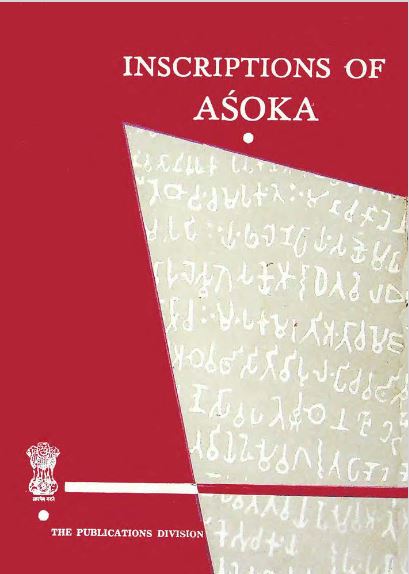The book “Inscriptions of Asoka” by Dineschandra Sircar, published in 1957, is a significant contribution to Odia literature and historical research. It delves into the fascinating life of Emperor Asoka, the great Mauryan ruler, through the study of inscriptions found in different parts of India.
The subject of the book primarily focuses on the historical significance of the inscriptions left behind by Emperor Asoka. Asoka, who ruled over a vast empire that included present-day India, Nepal, Bangladesh, and parts of Afghanistan, left his mark through inscriptions carved on pillars, rocks, and cave walls. These inscriptions provide valuable insights into the policies, beliefs, and achievements of the emperor.
Dineschandra Sircar, an eminent historian and scholar, made the bold decision to write this book in the Odia language, making it accessible to Odia readers and preserving the rich history of Kalinga, present-day Odisha. Through his meticulous research and translation, Sircar presents a detailed account of the inscriptions found in Odisha and their significance in understanding Asoka’s reign.
The book highlights the historical event that transformed Emperor Asoka from a ruthless and conquering monarch to a dedicated proponent of non-violence and Buddhism. It explores the Kalinga War, a significant conflict between Asoka’s forces and the people of Kalinga, in what is now modern-day Odisha. The war proved to be a turning point in Asoka’s life, as he was deeply moved by the immense loss of life and suffering.
Asoka’s conversion to Buddhism and subsequent efforts to spread its teachings are also a central theme of the book. The inscriptions found in Odisha provide valuable insights into his relationship with Buddhism and the efforts he made to promote the religion throughout his empire.
Sircar’s research is meticulous and backed by solid historical evidence. He meticulously examines the inscriptions found in Odisha, their translations, and their contextual significance. The book serves as a comprehensive guide to understanding Asoka’s reign, his policies, and the impact of his ruling on Kalinga and the surrounding regions.
The publication of “Inscriptions of Asoka” in 1957 was a landmark event for Odia literature and historical studies. It contributed greatly to the preservation and dissemination of Odisha’s rich history and culture. Moreover, the accessibility of the book in the Odia language played a crucial role in bringing this significant historical information closer to the people of Odisha.
Overall, “Inscriptions of Asoka” by Dineschandra Sircar is a valuable addition to the field of historical research and Odia literature. It sheds light on the fascinating life of Emperor Asoka through the lens of his inscriptions, specifically those found in Odisha. The book not only presents a detailed account of Asoka’s reign but also explores the profound impact he had on the region of Kalinga and the development of Buddhism in India.
Books Info
| Books name | Inscriptions Of Asoka |
| Author | Dineschandra Sircar |
| No Of pages | 93 |
| Publisher | NA |
| Publication | 1957 |
| Printed At | Corpration Printing |
| Distributor | NA |

